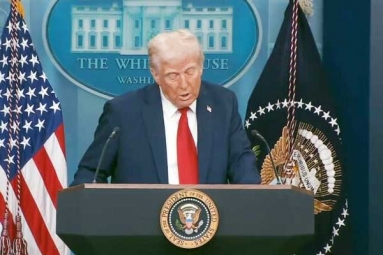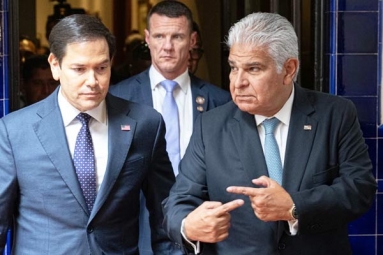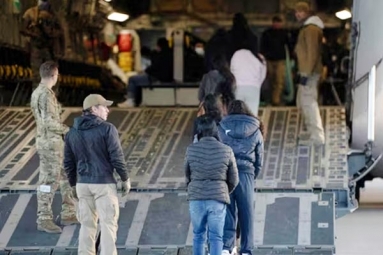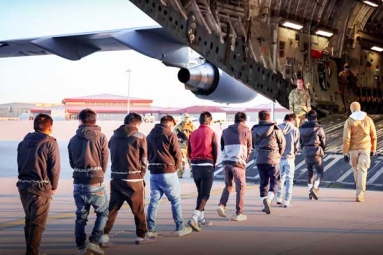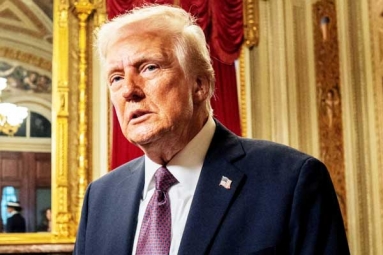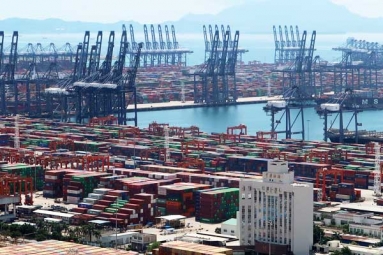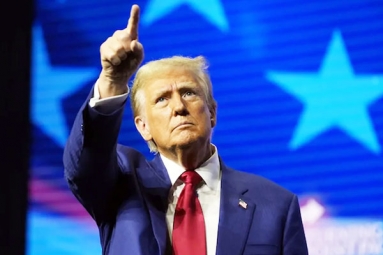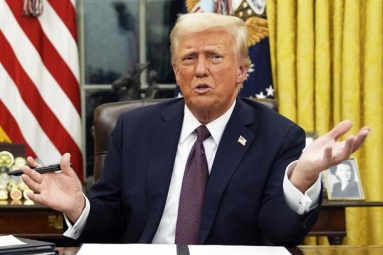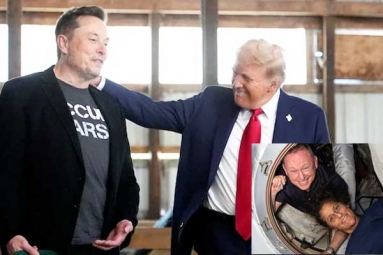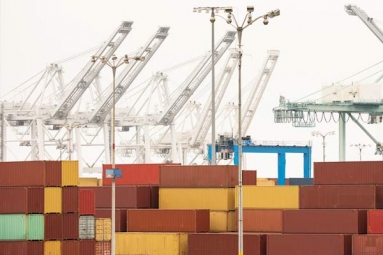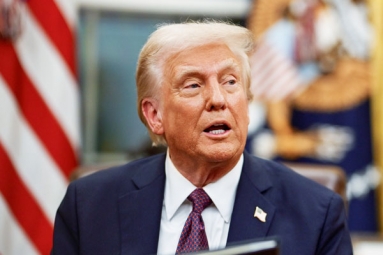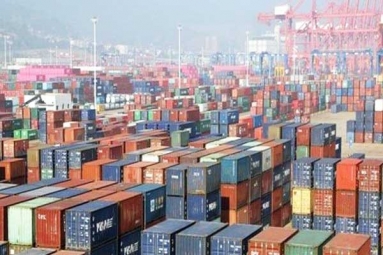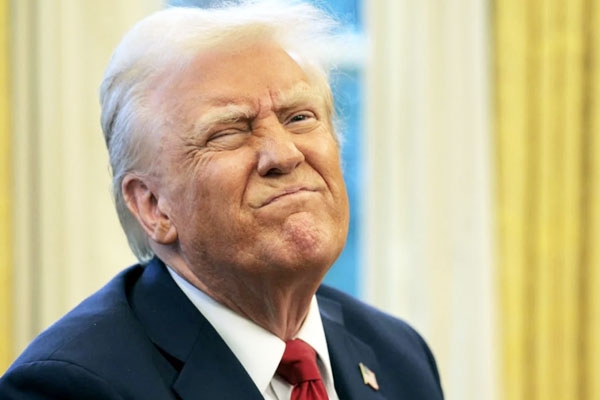
(Image source from: AFP)
The decision made by President Donald Trump's administration to halt funding from the United States Agency for International Development (USAID) is expected to affect healthcare initiatives and collaborative projects with India. Last month, Trump signed an executive order aimed at reassessing and aligning US foreign aid with the new administration's policies, implementing a 90-day freeze on foreign aid. In response to this order, USAID has instructed all organizations engaged in projects funded by them in India to cease operations until further notice. Elon Musk, the Tesla CEO and close advisor to Trump, remarked on Monday, "Regarding the USAID situation, I had an in-depth discussion with the president about it, and he concurred that we ought to dismantle it." Musk expressed his view that USAID functions as a "criminal organization" and believes it is time for it to come to an end. In a media briefing, when questioned about USAID, Trump described the organization as “a collection of radical left lunatics.” He added, “The idea itself is great, but it turns out these people are radical left lunatics; the concept is sound, but it's all about the personnel.”
USAID has mandated its partners in India to pause their projects. The notice specifies, "The recipient shall not continue work under this agreement until written notification from the Agreement Officer (USAID) confirms the cancellation of this award suspension." USAID has been active in India for over seven decades. This current fiscal year, India was set to receive USD 140 million via USAID, which is part of a national budget exceeding USD 600 billion, according to reports. For the fiscal year 2023-24, the allocation from USAID included USD 6.8 million for "government and civil society," approximately USD 55 million for health, USD 18 million for environmental initiatives, and USD 7.8 million for "social infrastructure," as detailed by the US government's Foreign Assistance website. While USAID's funding for India constitutes a minor fraction of the country's overall budget, sectors such as health are likely to face significant cuts, followed by education, gender issues, and climate change.
USAID collaborates with the Indian government to tackle various health-related issues, including maternal and child mortality rates, tuberculosis (TB), HIV, and the COVID-19 pandemic. Since 1990, its efforts have contributed to saving the lives of over 2 million children in India, preventing 25,000 deaths from pneumonia and 14,000 from diarrheal diseases. USAID is committed to aiding the Indian government in its national campaign, the Call to Action for a TB-free India, to enhance the diagnosis, treatment, and prevention of TB. In urban areas, USAID has equipped health providers to increase access to TB services while ensuring adherence to international standards for diagnosis, treatment, and care. Since 1995, in cooperation with both the government and civil society, USAID has advanced the prevention and care for populations most vulnerable to HIV, leading to a 32 percent decrease in new AIDS infections since 2007.
In response to the COVID-19 crisis, USAID unveiled funding amounting to nearly $13.1 million aimed at promoting vital public health communications within communities, enhancing testing and surveillance efforts, and providing training for Community Health Officers. Additionally, USAID supplied India with 200 cutting-edge ventilators. Working alongside various partners, USAID is active in 16 states, striving to boost reading proficiency in a total of nine languages. Their efforts include backing India's literacy initiative, Padhe Bharat Badhe Bharat (Read India, Progress India), which has successfully engaged over two million learners. Programs supported by USAID have equipped more than 61,000 educators with advanced teaching techniques, including the use of flashcards, games, storytelling, and collaborative learning to better engage their students.
Furthermore, USAID has supported the Swachh Bharat Abhiyan (Clean India Mission), initiated in 2014, helping over 300,000 individuals gain access to sanitation facilities and ensuring that 25,000 communities have achieved open defecation-free status. The organization also secured in excess of $5 million from private sector contributions to advance WASH solutions, with 42,000 toilets now appearing on Google Maps.
More than 132,000 farmers have increased their crop yields and incomes by utilizing improved technologies and management solutions facilitated by USAID. In partnership with the largest weather services firm in India, USAID expanded its network of automatic weather stations across nine states, providing reliable, localized weather data, risk management tools, and crop insurance alerts via SMS to roughly 70,000 farmers vulnerable to climate change.
Over 350 websites associated with the U.S. government, including that of USAID, have become inaccessible, covering sites tied to various government departments such as defense, commerce, and the Central Intelligence Agency, among others. It remains uncertain if this was a temporary situation or if the sites were removed at the direction of former President Trump. The information shared comes from archived content made publicly available prior to January 2021.
USAID is recognized as the largest humanitarian and developmental agency within the U.S. government, employing around 10,000 staff members. In the fiscal year 2023, it oversaw more than $40 billion in budget allocations, reflecting approximately 0.7 percent of the U.S. government's $6.1 trillion expenditure during that period, supporting initiatives across 130 countries. The roots of international development assistance trace back to the aftermath of World War II in 1945, when Secretary of State George C. Marshall, who served from 1947 to 1949, implemented significant financial and technical aid to help rebuild Europe. This effort, known as the Marshall Plan, facilitated the reconstruction of European infrastructure, bolstered economic recovery, and contributed to regional stability.
The achievements of the Marshall Plan led President Harry S. Truman to advocate for a dedicated international development assistance framework. Subsequently, in 1961, President John F. Kennedy formally established USAID through the Foreign Assistance Act. Since the rise of Trump as the 47th President, the agency and its work have faced increased examination. Elon Musk has accused USAID of using taxpayer funds to "support bioweapon research, including COVID-19, that resulted in millions of fatalities."



